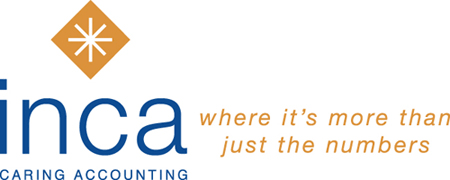Inca COVID-19 Update 5: Job Retention Scheme – Additional Information
27th March 2020
Job Retention Scheme – Q&A
The government has issued further guidance for employers on the Coronavirus Job Retention Scheme. Having reviewed this newly published information, we’re able to provide answers to some of the questions most frequently asked by our clients:
Q: What can I claim?
Under the scheme, you will receive a grant to cover 80% of an employee’s regular wage or £2,500 per month, whichever is the lower. Payments made are taxable and need to be recorded as such. Important note: Contrary to the ICAEW guidance yesterday, employer NIC and pension contributions can be claimed in addition to the salary, not as part of the overall claim.
HMRC advise they will be issuing further guidance on how employers should calculate Employer NIC and pension contributions before the scheme becomes live.
Q: Which of my employees are eligible?
The scheme is available for any employees who were on your PAYE payroll on 28th February 2020. Employees starting after this date are not eligible.
If you rehire an employee you made redundant after 28th February 2020, they will be eligible for the scheme.
Q: What is the minimum period I can furlough an employee for?
If you furlough an employee, it must be for a minimum of 3 weeks. This means you won’t be able to utilise staff on a one week on, one week off basis. You can recall employees from their furlough at any time but cannot claim the allowance if they are off for less than 3 weeks.
Can I furlough an employee who is self-isolating?
An employee who is on sick leave or self-isolating should be paid Statutory Sick Pay and can then be furloughed when their period of sick leave comes to an end.
Q: Can an employee undertake any work while furloughed?
A furloughed employee cannot undertake any work which generates revenue for your business. They can undertake training or volunteer work, but If an employee is required to work when furloughed, e.g. to participate in online training, then they must be paid at least the National Minimum or National Living wage – even if this is more than the 80% of their wage that is being subsidised.
Q: I am a director of the business. Can I be furloughed?
In simple terms, yes – and you would then be eligible for the wages support payments. However, as you can see above, a furloughed employee may not undertake revenue-generating activities for the business. However, a director is allowed to fulfil their statutory obligations. Unfortunately it’s still not clear if this permits furloughed directors to generate revenue. We’ll keep digging.
Q: I get paid a small salary and top this up with dividends. Are my dividends covered?
No. This scheme only applies to payments made under PAYE.
Q: Can I give myself a pay rise and then use this figure for the claim?
No. Your claim is based on the actual pay in February 2020 with an adjustment for starters in that month. HMRC will likely be monitoring any attempt to refile February 2020 payroll.
Q: Do I need to pay money I receive back to HMRC?
No. The money is a grant; however, as it lowers your business costs, it will be taxable.
Q: Will Inca help me claim back what I am owed under the Job Retention Scheme?
Yes. For our payroll clients, we are offering a fully managed Job Retention Scheme service, taking care of all HMRC reporting.
You can find more details about the Job Retention Scheme here: https://www.gov.uk/guidance/claim-for-wage-costs-through-the-coronavirus-job-retention-scheme
We hope you find this information useful. Please feel free to share it with other business owners in your contact sphere.
We aim to issue regular email updates throughout the Coronavirus crisis. If you do not already receive our emails please do feel free to sign up to our free advice service by following the ‘Subscribe’ link on the right hand side of this page.
If you have specific questions you’d like to ask, please email our new, dedicated email address [email protected] . We will collate questions and share answers here on the newsletter platform and on our social media channels.


